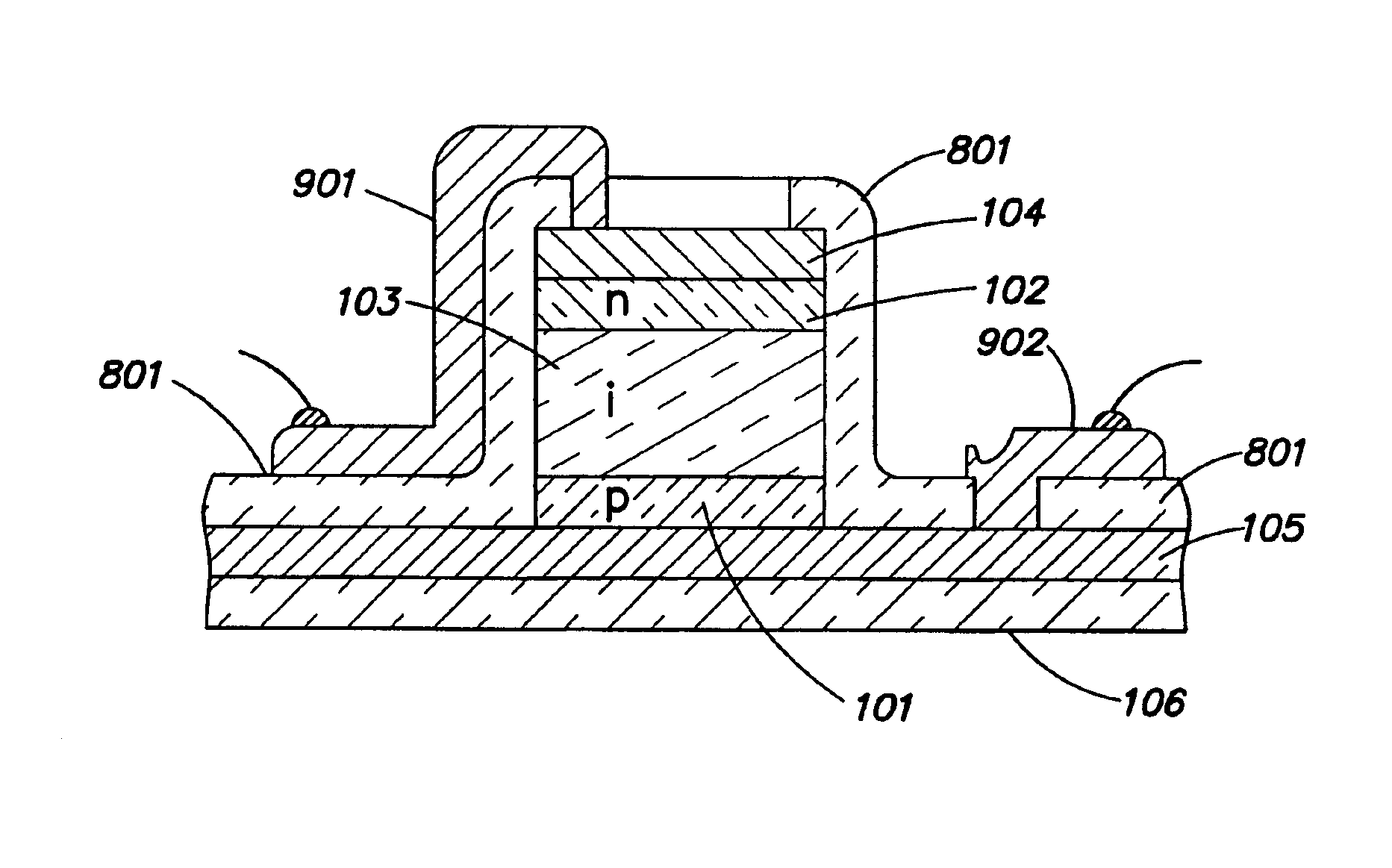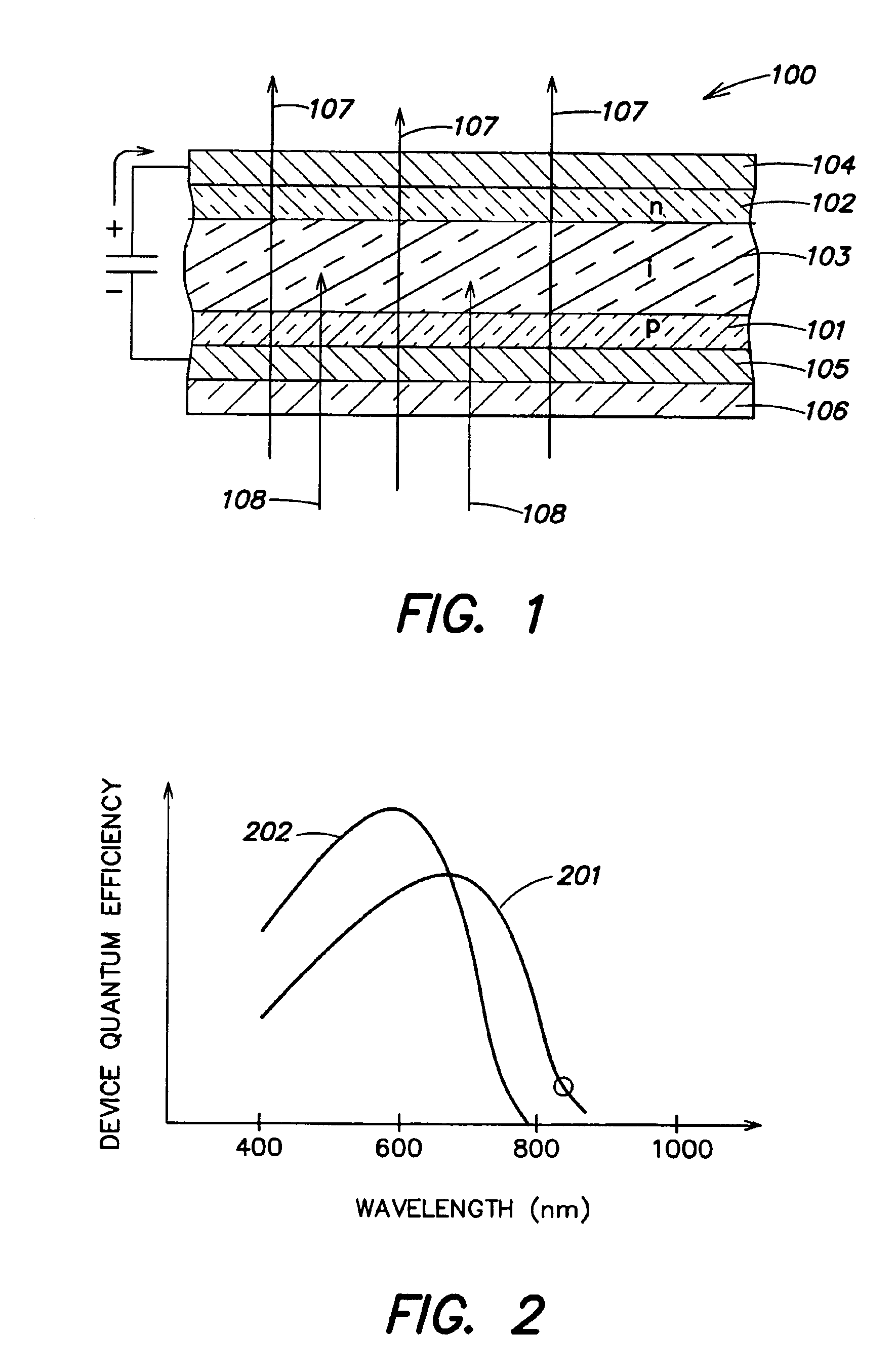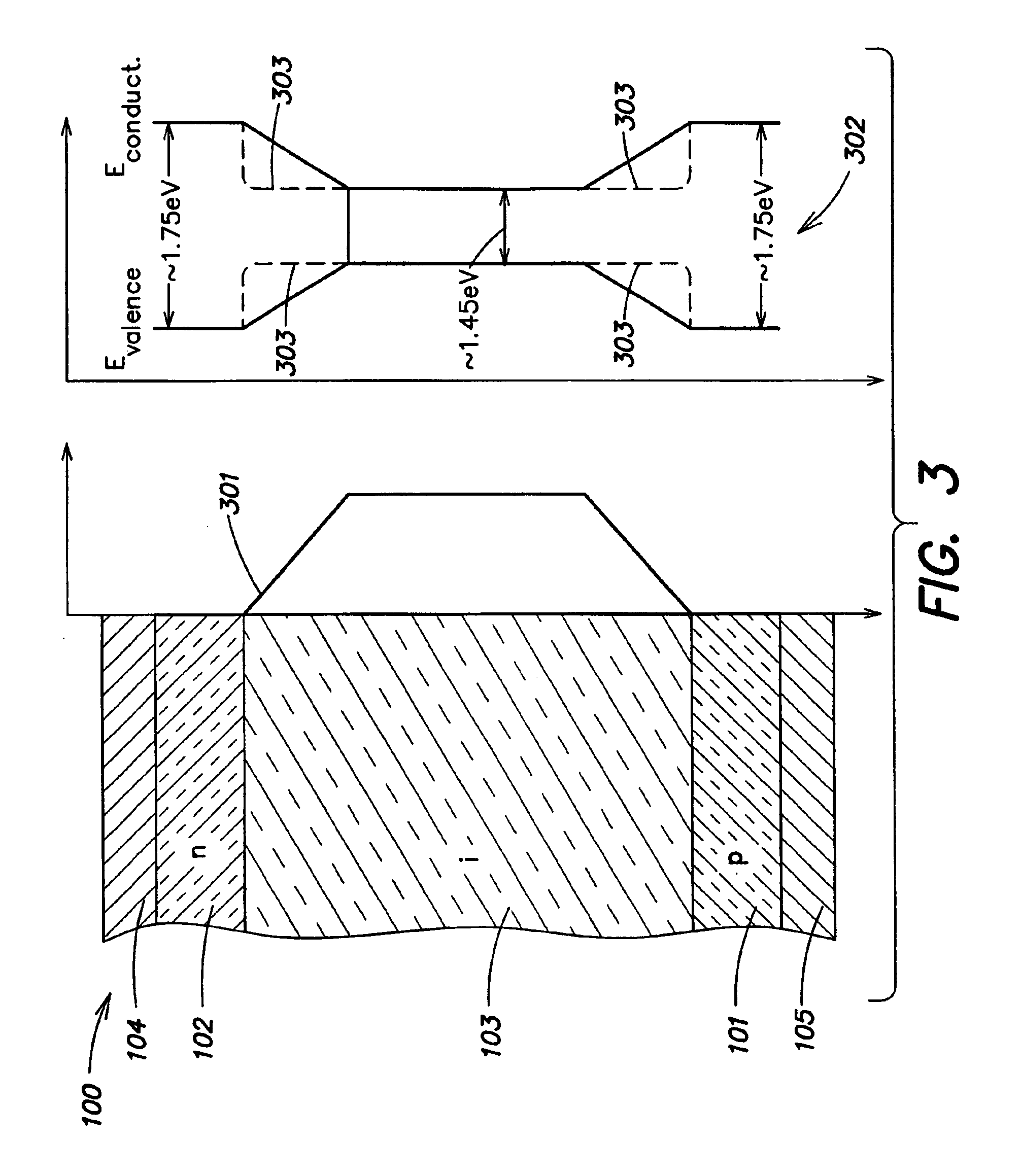Edge emitting devices have a number of drawbacks: first, each laser takes a relatively large area on the
semiconductor wafer, increasing cost; second, lasers cannot be tested until after they have been diced into individual units; third,
linear arrays of lasers are more difficult to produce in high densities and two-dimensional arrays are altogether impossible to fabricate.
Semiconductor lasers suffer from the fact that their threshold currents—and sometimes their slope efficiencies—can change significantly over
operating temperature ranges and with laser age.
This is a problem for a number of reasons.
First, a single operating current cannot be set for the lifetime of the laser, unless it is set sufficiently high that output power will always exceed a desired minimum.
This strategy has drawbacks: first, there may be
eye safety issues when a laser is operated at greater than a certain power; second, operating the laser continuously at high power significantly reduces lifetime and further raises temperature, and as a result,
threshold current; and finally, at high powers, high and low light output levels may be difficult to distinguish.
These
optical power fluctuations are a problem not only for laser diodes or VCSELS; they affect other SLEDs as well, necessitating
power control or monitoring for level-sensitive applications.
Thermal control solutions require significant space and power, and although they may be suitable for long-haul communications applications, such solutions are generally unacceptable in local-area or interconnect components where space is at an extreme premium.
Thermally-based solutions do not by themselves solve the problem of laser performance degradation over its operating lifetime.
They can only compensate for changes in the ambient temperature, which, although important, are far from the only factor affecting laser optical output for a given current.
For VCSELs, power monitoring is more complex, because the device does not generally emit light in the rear direction, i.e., through the substrate
wafer.
Both of these potential structures have not been used in production devices as a result of the significantly higher manufacturing complexities involved, and because of the fact that they do not directly monitor the same emission
modes propagated by the surface-emitting device through its aperture, for example into a communication medium.
However, this technique has severe drawbacks.
Not only will it result in different average power levels coming from the lasers and, indeed, a higher required overall bias current than necessary in order to insure reliable function over lifetime, but may result in such disparities in power that an
eye safety hazard results.
Another major drawback of current backreflection power monitors is the fact that light emanating from the VCSEL is not uniformly measured by the
detector.
This poses a problem for an optical monitor that reflects part of the emitted light into a
photodiode.
Moreover, the relative intensities of the
modes emitted by a VCSEL will change over temperature and age which means that the conditions observed during calibration may not exist over the entire operating lifetime of the VCSEL, and significant distortions of the power feedback
signal may result over time.
Other issues such as the mechanical and
optical stability of the semireflective window used to direct light back to the
photodetector will affect measurement as well.
For example, dust on the outside of the window may cause significantly higher backreflection, leading to an overestimate of delivered laser power.
However, even with this
partial solution, direct integration of the VCSEL with waveguides—or, for that matter, incorporation into any other
package that does not easily incorporate a window—is still impossible (assuming a power monitor is required).
One of the VCSEL's potential strengths is that it could be directly coupled to waveguides and fibers, and bonded to a variety of surfaces; this strength of the VCSEL cannot be exploited using conventional technologies.
However, no such device has yet appeared because of numerous problems heretofore thought insurmountable.
Even to experts in the field, the fabrication of devices meeting all these parameters has proven impossible.
Dark current in photodetectors is a perennial issue, particularly when the photodetector is stretched to meet other specifications such as
responsivity at a particular
wavelength and partial transparency.
A particular problem is the leakage on the edges of the device.
When the conductor used for this connection is relatively thin when compared to the structure's height and is deposited by a directional method that preferentially deposits on surfaces parallel to the substrate broken connections often result.
An immediate potential solution was to use very thick
layers of
metal to form the contact once the layer is thick enough it will reach over the edge of the PIN stack; this fix, however, brings with it other problems when working with thin films.
In particular, the film
stress induced by such a thick layer will tend to peel off the entire photodetector structure.
When the conductor used for this connection is relatively thin when compared to the structure's height, and is deposited by a directional method that preferentially deposits on surfaces parallel to the substrate, broken connections often result.
Another problem is because the entire PIN structure was extended for large areas under the insulating layer and contacts i.e., areas that do not contribute to the intended photoresponse of the device, the
dark current exhibited by the devices rose significantly for two reasons: (1) there is a much larger bulk of PIN stack that will produce purely thermal currents, particularly at higher temperatures and (2) the leakage currents produced along the extended edges of the structure rise.
 Login to View More
Login to View More 


